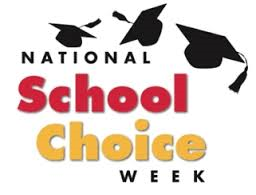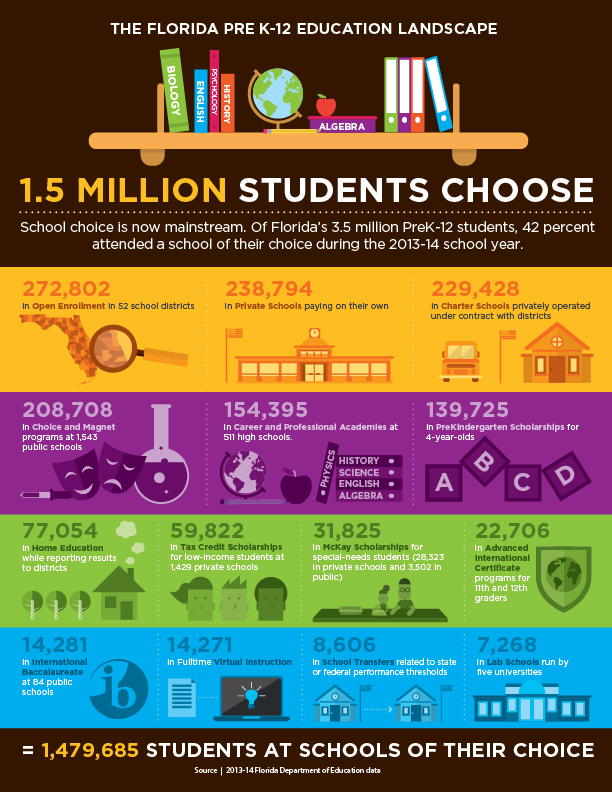To comprehend the pace at which Florida parents are choosing education options for their children, look no further than charter schools. In the past two years, charter enrollment increased by 49,116 while total public school enrollment went up by only 2,096.
Put another way, in 2013-14, one in every 12 students attended a charter school – a form of education that, in Florida, is still just a teenager.
 Charter schools are only one part of the annual statistical sheet that breaks down Florida’s educational choice “landscape.” The new 2013-14 version speaks to why National School Choice Week chose to kick off activities this year in the Sunshine State.
Charter schools are only one part of the annual statistical sheet that breaks down Florida’s educational choice “landscape.” The new 2013-14 version speaks to why National School Choice Week chose to kick off activities this year in the Sunshine State.
The bottom line, though not greatly different than last year, is still jaw-dropping: Last year, 1,479,685 preK-12 students chose something other than their traditional district-assigned school – 42 percent of all students.
That speaks to a new normal in public education.
The choice landscape sheet is built with state Department of Education data parsed by the Office of Independent Education and Parental Choice in partnership with Step Up For Students, which co-hosts this blog. The state tracks a wide assortment of educational options in the 67 school districts.
Though many school choice advocates focus on private learning options, school districts themselves are offering some of the most popular choices. More than a quarter-million students take advantage of school assignment plans in 52 of the state’s 67 counties that allow parents to choose from multiple options. Nearly 209,000 students attend choice and magnet programs designed to play to each child’s academic strengths or interests. More than 154,000 choose career and professional academies that are tailored to their specific work goals upon graduation. More than 14,000 students take their entire daily curriculum online.
In schools not operated by districts, enrollment is also growing. Charter schools reached more than 224,000 students last school year. That represents 27 percent growth over the previous two years (and the growth has continued, with charter school enrollment topping 250,000 so far this year). Tax Credit Scholarships for low-income students reached nearly 60,000 last year – a two-year growth of 49 percent (and the scholarship program has also continued to grow in the current school year, reaching nearly 70,000 students).
Vouchers for prekindergarten served nearly 140,000 students in 2013-14, which represents a 4 percent decrease and may reflect that the program, mandated by voters in 2004, is beginning to reach its peak.
The significance of these enrollment trends is hard to overstate. Most of these options are less than a generation old, and when these students become parents they will view shopping for schools as a routine part of education life. Children who succeed in a school environment that is tailored to their needs become adults who tend to insist on the same for their offspring. While they may well determine that a neighborhood school is the best place for their children, they won’t be driven by the kind of nostalgia that was felt by their grandparents.
The politics here are not difficult to cipher. Because these children are not assigned to their schools, their parents’ decisions amount to a powerful form of voting. So whether politicians lead or follow this parade, they will certainly be influenced by it.



